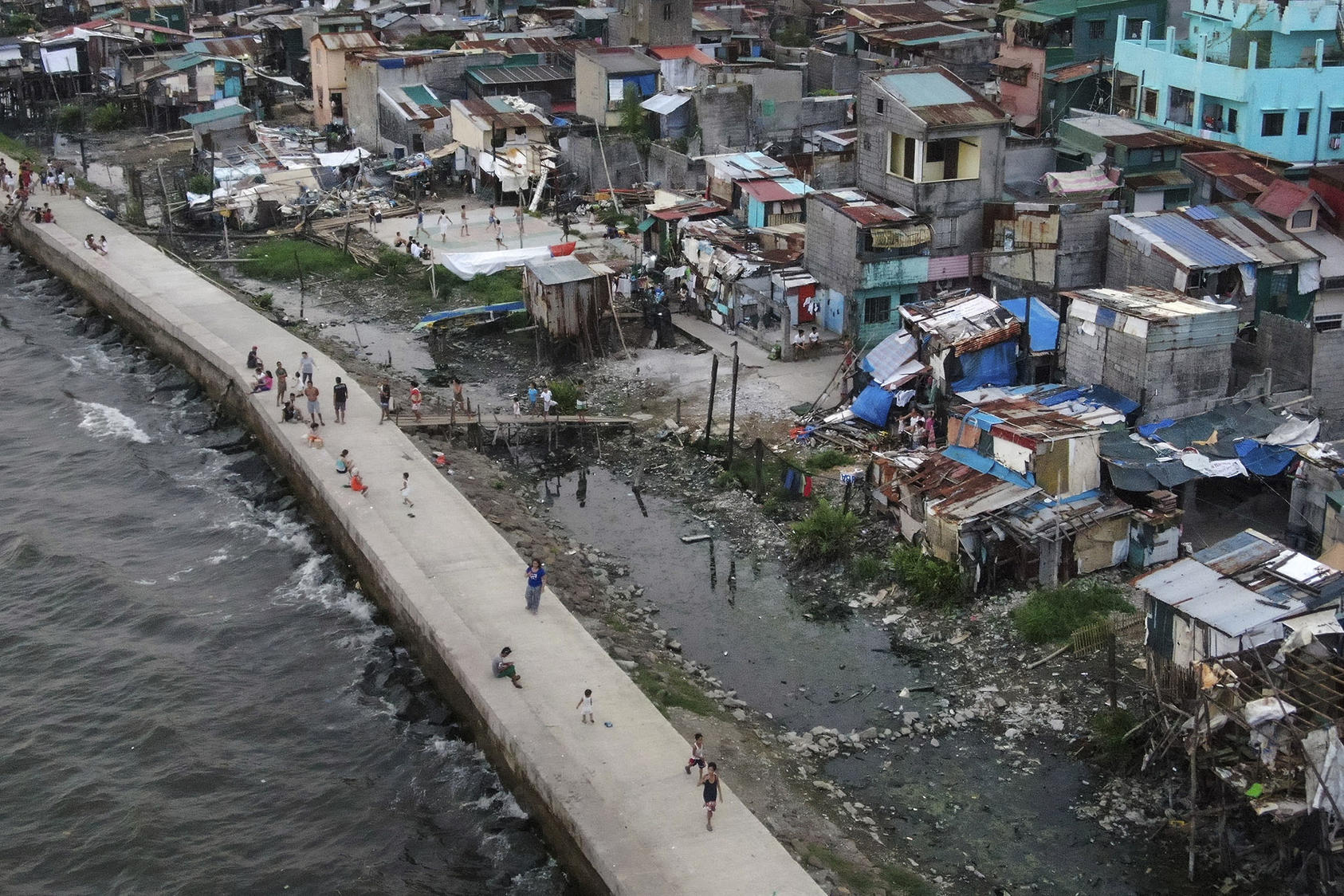The Peacebuilding Implications of the Latest U.N. Climate Report
To stay ahead of climate curve, a transition to green energy must be coupled with informed peacebuilding.
This week, the U.N. Intergovernmental Panel on Climate Change released its most extensive and alarming report yet. The findings made clear that the window to stifle the worst impacts of climate change is rapidly closing — and that efforts to protect the most vulnerable communities have fallen short thus far. This places peacebuilders in a difficult bind, as unchecked climate change correlates to increased conflict, but rapid adaptions and a wholesale transition to green energy risk further disruption in already fragile regions. USIP’s Tegan Blaine looks at how climate policy and peacebuilding can work together to ensure that we stay ahead of the climate curve while still putting affected communities on the path toward long-term peace and stability.

Based on the report’s findings, are there any newfound implications for how climate will affect the future of conflict and peacebuilding?
The report’s most critical finding is that our global society has not yet begun making the changes necessary to limit the impacts of climate change. The longer we delay our actions, the harder it will be to avoid the impacts that we are already beginning to feel.
This has a few different consequences for peacebuilders. First, the rapid transitions now required are likely to lay bare existing grievances and result in new ones. Generally, peacebuilding requires time to build trust and collaboration to tackle these challenging issues — but time is now in short supply. The concern now is that we are likely to see climate change outpace the amount of time it takes to build such responses.
Second, climate change is likely to have significant implications for human security — whether food, water or health security. For instance, droughts exacerbated by climate change have repeatedly caused crop failure in Ethiopia, Guatemala and Pakistan. Extremist groups often take advantage of situations where people feel as though their future is uncertain to recruit, with devastating implications for stability.
And although research is not exact on climate and conflict relationships, studies have shown that every degree increase in temperature corresponds to a rise in interpersonal conflict by 2.4 percent and intergroup conflict by 11.3 percent. Again, we need to provide choices for these communities, as well as investment to reduce insecurity and support stable livelihoods.
The last issue has to do with communities who feel as though they have no other option but to consider moving — whether temporarily in response to a natural disaster or to seek out work, or more permanently as people no longer see a future for themselves in their current communities.
Most of these migrants are not going to single out climate change to explain their decisions. Instead, they will talk about crop failure, lack of water or violence — some of which may be driven by climate change and some of which may not. But projections and trends strongly suggest that climate change will have an increasingly heavy hand in forcing displacement and migration.
And for the cities that migrants travel to, resources may already be strained and urban governments may be ill-equipped to deal with mounting pressures, leading to further instability.
Additionally, all three of these examples have similar implications for people’s faith in public institutions and leadership, which can lead to increased distrust of formal governance structures — making it even more difficult to address climate change, as well as driving civil unrest and conflict.
One of the report’s key findings was that countries will fail to adapt to climate change if their processes aren’t inclusive. Why is inclusivity such an important factor in combatting climate change, and what are ways that we can ensure that climate policy is inclusive going forward?
The peacebuilding community has already discovered that peace agreements are more effective and more durable if they are developed through inclusive processes. The same lesson applies to responding to climate change.
Climate change is likely to drive increased inequality and exacerbate the vulnerability of already-marginalized communities. Minority and indigenous communities already suffer disproportionately from environmental impacts, including those driven by climate change. It’s also well-documented that women and children are at the frontlines of climate change and face higher risks from its impacts. And with climate change projected to increase a variety of physical and mental health stressors, it’s critical to address the needs of communities with disabilities.
As the world transitions to a global green
Developing inclusive climate change responses isn’t just the right or effective way to go. An inclusive process can mobilize communities around a shared issue and shared solution, address the needs of vulnerable populations more effectively and address areas of conflict before they become grievances.
The actions recommended by the report are global in scale and transformative in scope. In places already suffering from conflict, how can we ensure that the dramatic societal changes associated with addressing climate change don’t further destabilize already fragile regions?
This is a huge concern, especially since there is a strong correlation between fragility and vulnerability to climate change.
The IPCC report calls for “transformational” changes to safeguard countries and communities from climate change. This will require systems change at many levels: governance systems, agricultural systems, water systems, health systems, educational systems and beyond.
Yet, adaptation has been disjointed and incremental so far. Using cities as an example — fewer than 46 percent have conducted vulnerability assessments and just 25 percent have identified vulnerable populations. Meanwhile, most adaptation programs are focused on particular sectors rather than thinking through the long-term changes across society that will support adaptation.
One thing that works in our favor is that the same kinds of investment that help stabilize fragile regions are also important from a climate change perspective: Bolstering governments’ abilities to respond to the needs of their citizens and to provide basic services; building increased trust and cooperation through dialogue and engagement; and building resilience within communities.
In light of this new report, what do the results of past climate conferences — such COP26 last November — tells us about where climate policy and mobilization need to go from here?
COP26 last November not only set ambitious long-term targets but also asked countries to return next year with concrete plans about what they will undertake over the next 8 years as we approach 2030. Suddenly a transition to a green
As countries begin to put together very practical plans over the next few months, we as the peacebuilding community need to be ready to support them by:
- Helping them understand how their existing plans could exacerbate or contribute to conflict and how to begin working to reduce those risks.
- Supporting them to work more closely with communities from the get-go in designing their own future in ways that meet the needs of marginalized as well as privileged communities and engage everyone in more inclusive, equitable processes.
- Examining how they can start building community resiliency and government capacities to tackle long-term challenges of both the climate change and conflict varieties.
However, I think the last COP also highlighted that there is a large amount of work that needs to be done at the multilateral level to ensure that climate change doesn’t contribute to a greater risk of conflict around the world.
We need to work to reduce the brewing geopolitical and local tensions around a transition to a green
In particular, there will need to be more discussions on the damages from climate change that go beyond those to which human society can adapt (the “Loss and Damage” section of the negotiations). We will need to work toward a future in which resources, whether financial or technological, are more easily shared to support the communities which need them most.



